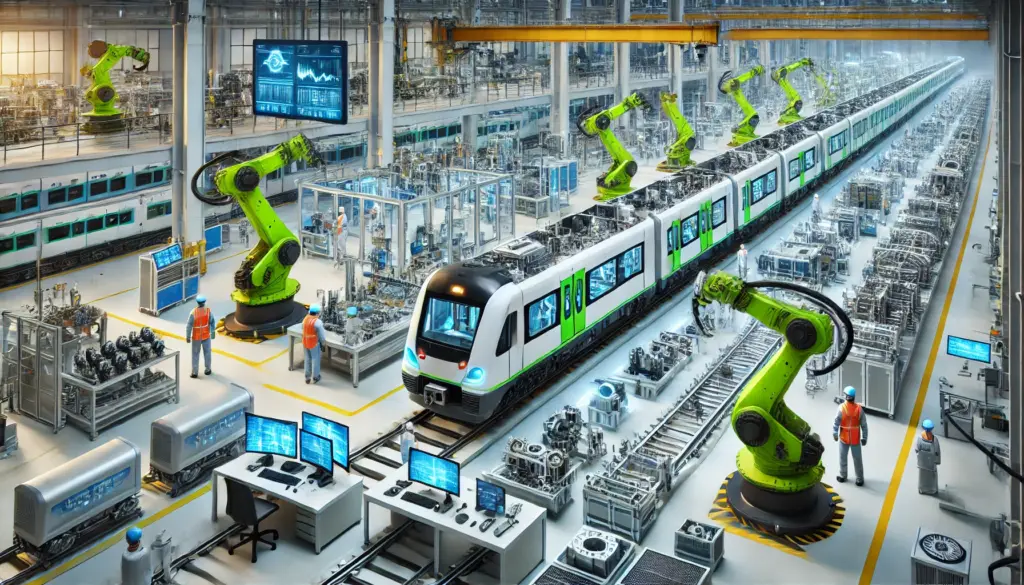Railway Digital Transformation: Market Analysis and Case Studies
Market Overview
The global connected railway market has evolved from technological experimentation to a substantial economic sector worth $162 billion worldwide. Organizations seeking competitive advantage must strategically leverage emerging technologies to capture market share.
Financial Projections
The connected railway market grew from $84.1 billion in 2021 to a projected $162.8 billion by 2033. This expansion is driven by:
- Internet of Things (IoT) integration
- Artificial intelligence implementation
- Advanced control systems
- Enhanced cybersecurity frameworks
Regional Market Dynamics
The MENA region’s Industrial IoT market reached $17.8 billion in 2022, with projected annual growth of 15.5% to $45 billion by 2030. Railway applications represent approximately 35% of this market segment.
Turkey has allocated $35 billion for railway infrastructure development from 2023-2035, demonstrating significant commitment to sector modernization.
Case Study: Metro Istanbul Digital Twin Implementation
Metro Istanbul’s digital twin initiative represents a comprehensive transformation across its network infrastructure:
Current Network Scale
- Total length: 241.35 km
- Active lines: 18 (including 8 metro, 4 tram, 2 light rail, 2 funicular, and 2 aerial lines)
- Stations: 234
- Rolling stock: 1,015 vehicles
Performance Targets by 2030
Operational Efficiency
- Maintenance time reduction: 12-25%
- Energy consumption cost reduction: 7.5%
- Maintenance cost reduction: 15%
Time Allocation Optimization
- Operation time increase: 60% to 75%
- Maintenance time decrease: 40% to 25%
Cost Structure Improvements
- Energy consumption costs: 45% to 30%
- Maintenance costs: 30% to 20%
Specific System Improvements
Escalator Management
- 90% reduction in equipment failure rates across 808 escalators
- 30% decrease in maintenance costs
CBTC System Implementation
- Annual savings: $120 million
- System reliability: ~99%
Regenerative Energy Recovery (REGEKAS)
- Annual energy savings: 28,000 MWh
- Cost savings: $2.5 million annually
- Converts train braking energy back to electrical grid
Organizational Impact
The initiative achieved a 16.1% increase in female employee participation, addressing gender representation in the traditionally male-dominated railway sector.
Case Study: TCDD Digital Transformation
The Turkish State Railways (TCDD) has established comprehensive digitalization objectives with substantial financial commitments.
Investment and Targets
- Total digitalization budget: ~$52 million (1.45 billion TL) through 2028
- Current digitalization level: 48.3%
- Strategic objective: Zero accident operations through AI integration
Technology Implementation
Autodesk Tandem Platform Integration
- Digital twin access for maintenance personnel
- Equipment analysis and documentation before physical intervention
- Centralized equipment signal data storage
- AI-driven predictive analysis capabilities
Network Management System (NMS) Partnership with Huawei and local integrator Innova resulted in:
- Consolidation of 18 separate networks into centralized NMS
- Monitoring capability across 14,000+ km of railway infrastructure
- Integrated oversight of GSM-R base stations, SDH, DWDM, routers, switches, servers, and storage units
Economic Impact
The National ETCS and GSM-R signaling project demonstrates potential savings of approximately $12 billion, highlighting significant untapped efficiency opportunities.
Global Industry Collaboration
Deutsche Bahn and Stadler have established a strategic partnership to develop AI-powered digital twin technology for rolling stock. This collaboration serves as a benchmark for industry-wide digital transformation initiatives.
Strategic Implications
The railway sector’s digital transformation represents a fundamental shift from reactive to proactive operational strategies. Organizations implementing comprehensive IoT, AI, and digital twin technologies are positioning themselves to capture disproportionate value in the expanding global market.
Success requires systematic implementation of layered digital capabilities, from basic network infrastructure to advanced predictive maintenance systems. The case studies demonstrate that strategic technology investments yield measurable improvements in operational efficiency, cost reduction, and safety performance.


